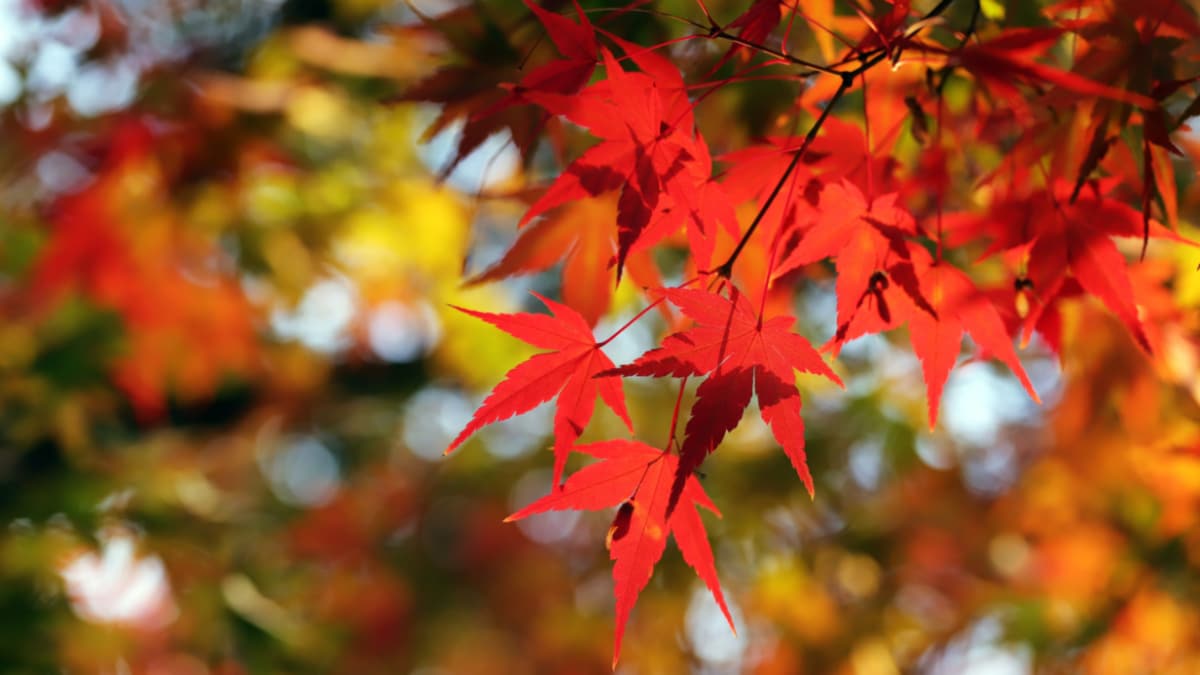

Climate change is causing leaves to change color and fall earlier in the year. Pxfuel
By Philip James
As the days shorten and temperatures drop in the northern hemisphere, leaves begin to turn. We can enjoy glorious autumnal colors while the leaves are still on the trees and, later, kicking through a red, brown and gold carpet when out walking.
When temperatures rise again in spring, the growing season for trees resumes. Throughout the warmer months, trees take carbon dioxide from the atmosphere and store it in complex molecules, releasing oxygen as a byproduct. This, in a nutshell, is the process of photosynthesis. The more photosynthesis, the more carbon is locked away.
We know that carbon dioxide is a major driver of climate change, so the more that can be taken out of the atmosphere by plants, the better. With the warmer climate leading to a longer growing season, some researchers have suggested that more carbon dioxide would be absorbed by trees and other plants than in previous times. But a new study has turned this theory on its head and could have profound effects on how we adapt to climate change.
Reaching the Limit
The researchers, led by Deborah Zani at the Swiss Federal Institute of Technology, studied the degree to which the timing of color changes in autumn tree leaves was determined by the growth of the plant in the preceding spring and summer.
Temperature and day length were traditionally accepted as the main determinants of when leaves changed color and fell, leading some scientists to assume that warming temperatures would delay this process until later in the season. Studying deciduous European tree species, including horse chestnut, silver birch and English oak, the authors of the new study recorded how much carbon each tree absorbed per season and how that ultimately affected when the leaves fell.
Using data from the Pan European Phenology Project, which has tracked some trees for as long as 65 years, the researchers found in their long-term observational study that as the rate of photosynthesis increased, leaves changed color and fell earlier in the year. For every 10% increase in photosynthetic activity over the spring and summer growing season, trees shed their leaves, on average, eight days earlier.
Climate-controlled experiments on five-year-old European beech and Japanese meadowsweet trees suggest what could be behind this unexpected result. In these trials, the trees were exposed to full sun, half shade or full shade. The results show that there is a limit to the amount of photosynthesis that a tree can carry out over a growing season. Think of it like filling a bucket with water. It can be done slowly or quickly, but once the bucket is full, there is nowhere for any more water to go.
This research shows that deciduous trees can only absorb a set amount of carbon each year and once that limit is reached, no more can be absorbed. At that point, leaves begin to change color. This limit is set by the availability of nutrients, particularly nitrogen, and the physical structure of the plant itself, particularly the inner vessels which move water and dissolved nutrients around. Nitrogen is a key nutrient which plants need in order to grow, and it’s often the amount of available nitrogen that limits total growth. This is why farmers and gardeners use nitrogen fertilizers, to overcome this limitation.
Together, these constraints mean that carbon uptake during the growing season is a self-regulating mechanism in trees and herbaceous plants. Only so much carbon can be taken up.
Earlier Autumn Colors
In a world with increasing levels of carbon in the atmosphere, these new findings imply that warmer weather and longer growing seasons will not allow temperate deciduous trees to take up more carbon dioxide. The study’s predictive model suggests that by 2100, when tree growing seasons are expected to be between 22 and 34 days longer, leaves will fall from trees between three and six days earlier than they do now.
This has significant implications for climate change modeling. If we accept that the amount of carbon taken up by deciduous trees in temperature countries like the UK will remain the same each year regardless of the growing season, carbon dioxide levels will rise more quickly than was previously expected. The only way to change this will be to increase the capacity of trees to absorb carbon.
Plants that aren’t limited by the amount of nitrogen available may be able to grow for longer in the warming climate. These are the trees which can take nitrogen from the air, such as alder. But these species will still lose their leaves at roughly the same time as always, thanks to less daylight and colder temperatures.
But on the upside, with the prospect of some trees losing their leaves earlier and others losing them at the time they do now, there might be the prospect of prolonged autumnal colors – and more time for us to kick through the leaves.
Philip James is a Professor of Ecology, University of Salford.
Disclosure statement: Philip James does not work for, consult, own shares in or receive funding from any company or organization that would benefit from this article, and has disclosed no relevant affiliations beyond their academic appointment.
Reposted with permission from The Conversation.
- Environmental Changes Are Killing the Livelihood of Great Lakes ...
- A Mysterious Leaf Disease Is Killing Beech Trees—and It's Spreading
- Red Rocks: Using Color to Understand Climate Change
- This Fall Foliage Map Tells You When to Expect the Most Colorful Leaves
- Climate Change Is Muting Fall Colors — It's the Latest Way Humans Have Altered U.S. Forests - EcoWatch

 233k
233k  41k
41k  Subscribe
Subscribe 